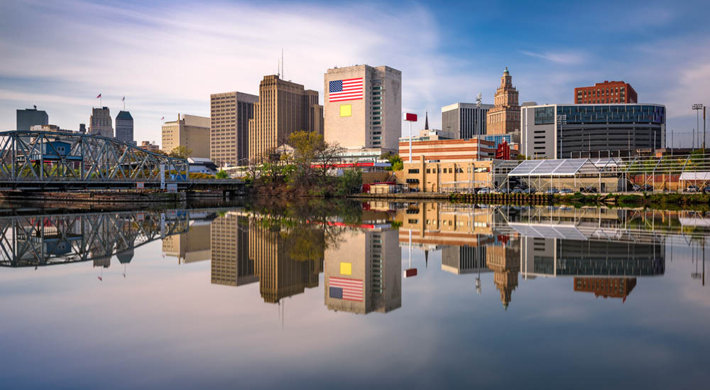New Jersey Drug Addiction

The State of New Jersey lies parked between two of the primary hotbeds of drug trafficking and consumption on the East Coast — the Philadelphia metropolitan area and New York City and surrounding metropolitan areas. As a result, the regions of New Jersey adjacent to New York City and Philadelphia — Passaic, Essex, Union, Morris, Bergen and Camden Counties — are the hardest hit areas when it comes to the movement and consumption of illicit drugs. The burden of this drug abuse becomes drug addiction for too many New Jersey citizens.
Both major metropolitan areas are highly suitable for supporting the illicit drug trade. High proportions of ethnic populations, abundant transportation facilities, hundreds of financial institutions that enable the conveyances of drug proceeds back to foreign countries, and a shortage of effective drug rehabilitation and drug education services are a volatile mix.
International Patterns of Drug Trafficking and Distribution
The number of ethnic groups, drug trafficking organizations, street gangs and outlaw motorcycle gangs that conspire to distribute illicit drugs into New Jersey creates a bewildering mix. African-Americans, Asians, Caucasians, Columbians, Dominicans, Jamaicans, Mexicans, Puerto Ricans, plus street and motorcycle gangs either cooperate or compete for the business. When one group decides to acquire more territory, violence normally results.
In New Jersey, drug dealers have moved south out of New York City into the smaller towns and rural areas of the state. Some dealers wish to escape the higher levels of law enforcement in the city and some are looking for new customers in previously untapped markets, particularly those peddling heroin. Members of the Crips street gang have been found to be recruiting new members in smaller towns in New Jersey, infiltrating public and private schools. In Camden, the Bloods street gang has been increasing its control of drug distribution, taking it away from smaller neighborhood gangs. The result of this competition is always higher levels of violence.
Cocaine prices have been fluctuating in the last two years, either thought to be subject to price manipulations or because there is more attention on smuggling cocaine to Europe, reducing the supply to the Eastern Seaboard. Some dealers have turned to dealing heroin instead of cocaine, and some abusers of prescription narcotics are turning to heroin as it is usually cheaper. The result is more demand for heroin and higher rates of addiction and need for addiction treatment.
Patterns of Drug Abuse and Addiction
Like every other area in the United States, marijuana is widely abused, but it is not considered the most major threat in the area. Cocaine is identified as the primary threat, with heroin abuse right behind it. Both cocaine and heroin are often involved in drug-related deaths in the New York-New Jersey area. More than 1000 people in this metropolitan area died in drug-related incidents in 2007. Of New Jersey counties, only Morris County (31 deaths) and Union County (55 deaths) were represented. Opiates, cocaine, alcohol, benzodiazepines, and antidepressants were the top drugs involved.
As 83 percent of these deaths were accidental, overdoses can be assumed in the majority of cases. And most of them were multi-drug deaths. Opiates, such as heroin, methadone and prescription opioids, and cocaine were the only drugs responsible for single-drug deaths: 45 due to heroin alone. One hundred eighty-five people died from cocaine use alone. It’s not known how much of that cocaine had been converted into the smokable form, crack cocaine.
Area Lacks Sufficient Drug and Alcohol Addiction Treatment Centers
A survey done of New Jersey residents in 2006 estimated that more than 650,000 people had used marijuana in the prior year, more than 250,000 had abused prescription pain relievers and more than 130,000 had used cocaine.
As for alcohol abuse, more than one and a half million people were estimated to have engaged in binge drinking each month (five or more alcoholic drinks in one sitting for a man and four or more drinks for a woman).
The young were not exempt from drug or alcohol abuse, either. Of young people between 12 and 20, 303,000 drank alcohol and more than 200,000 engaged in binge drinking. Nine thousand youth between 12 and 17 had also been cocaine abusers.
Hundreds of thousands of people need help with drug and alcohol recovery but are not getting help. The survey estimated that 139,000 people needed help recovering from drug abuse and 449,000 needed an alcohol addiction treatment program - but neither group received any help. In some cases, this is due to the denial of the problem by the addicted person. This is why interventions work. A person needing drug rehab may never be able to make the move on their own. But with help, they can be gotten into a treatment center suitable for their particular substance abuse problem.
What is expected in New Jersey is more heroin abuse and more people, primarily young people, abusing controlled prescription drugs such as narcotics, antidepressants, stimulants and muscle relaxants. Without addiction treatment for the people who find they can’t quit using cocaine, heroin, marijuana or other drugs when they want to, addiction numbers may climb. Without alcohol treatment centers for those who need treatment for alcohol addiction, many thousands of people will continue to suffer the losses that commonly accompany substance abuse and addiction.
See also: New York drug addiction | Pennsylvania drug addiction
 ®
®